Install PCIe cards in your Mac Pro (2019)
Learn about the PCIe slots on your Mac Pro (2019) and how to install additional cards.
Card capacity and size
Mac Pro has eight PCIe x16* sized slots that accept many different types of PCIe cards:
Slot 1: up to x16 lanes (double-wide)
Slot 2: up to x8 lanes (double-wide)
Slot 3: up to x16 lanes (double-wide)
Slot 4: up to x16 lanes (double-wide)
Slot 5: up to x16 lanes (single-wide)
Slot 6: up to x8 lanes (single-wide)
Slot 7: up to x8 lanes (single-wide)
Slot 8: up to x4 lanes (half-length)
Slot 8 is x4 in size.
Mac Pro Expansion (MPX) Modules can use up to two slots each — in slots 1-2 and slots 3-4. Mac Pro comes with the Apple I/O card preinstalled in slot 8 which contains two Thunderbolt 3 ports, two USB-A ports and a 3.5 mm headphone jack. Learn about PCIe cards you can install in your Mac Pro (2019).
Check available slots
To check the status of each slot, choose Apple menu > About This Mac, then click the PCI Cards tab.
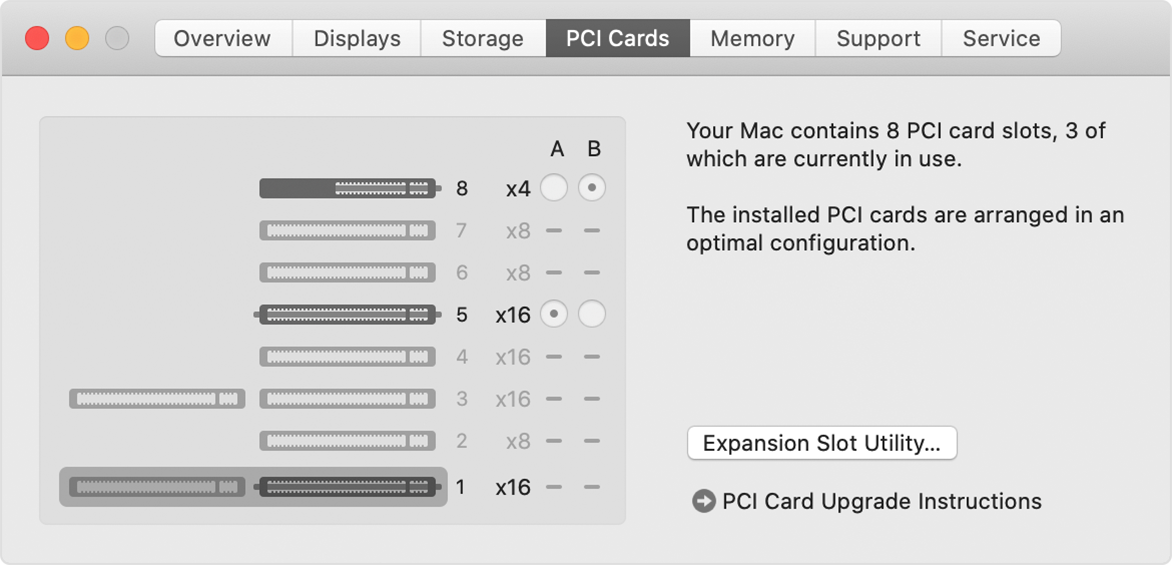
By default, Mac Pro automatically balances bandwidth between all of the cards across the two PCIe pools. You can use Expansion Slot Utility to make manual adjustments to pool allocations.
If you install two Radeon Pro Vega II MPX Modules, you can connect them together using Infinity Fabric Link. Learn how to connect two Radeon Pro Vega II MPX Modules.
Installing PCIe cards
Learn how to remove the housing or top cover of your Mac Pro and install a PCIe card.
Remove the housing or top cover
Follow the steps to remove the housing on Mac Pro (2019) or the top cover on Mac Pro (Rack, 2019).
Mac Pro (2019)
Wait approximately 5-10 minutes for the computer to cool down.
Unplug all cables, except the power cable, from your computer.
Touch the metal housing on the outside of Mac Pro to discharge any static electricity, then unplug the power cable.
Always discharge static before you touch parts or install components inside your Mac Pro. To avoid generating static, don't move around the room until you've finished installing the cards and slid the enclosure back onto the computer.
Flip the top latch up, then twist left to unlock the housing.

Lift the housing straight up and off the Mac Pro. Carefully set it aside.
Mac Pro won't turn on when its cover is removed.
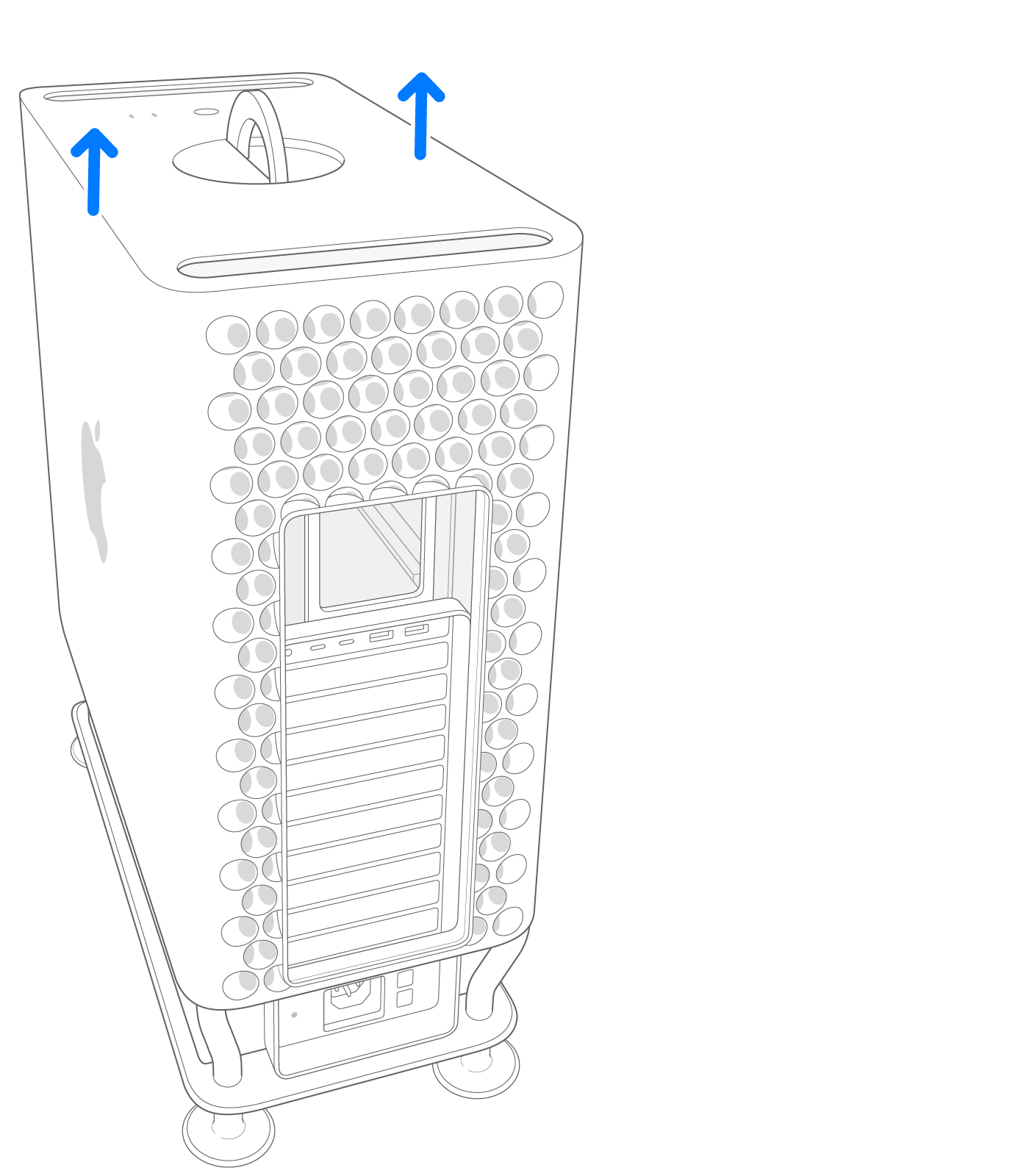
Mac Pro (Rack, 2019)
Wait approximately 5-10 minutes for the computer to cool down.
Unplug all cables, except the power cable, from your computer.
Touch the metal housing on the outside of Mac Pro to discharge any static electricity, then unplug the power cable.
Always discharge static before you touch parts or install components inside your Mac Pro. To avoid generating static, don't move around the room until you've finished installing the cards and slid the top cover back onto the computer.
Slide the top cover release latches to the unlocked position, lift the top cover and pull it away from the front plate, then set it aside.
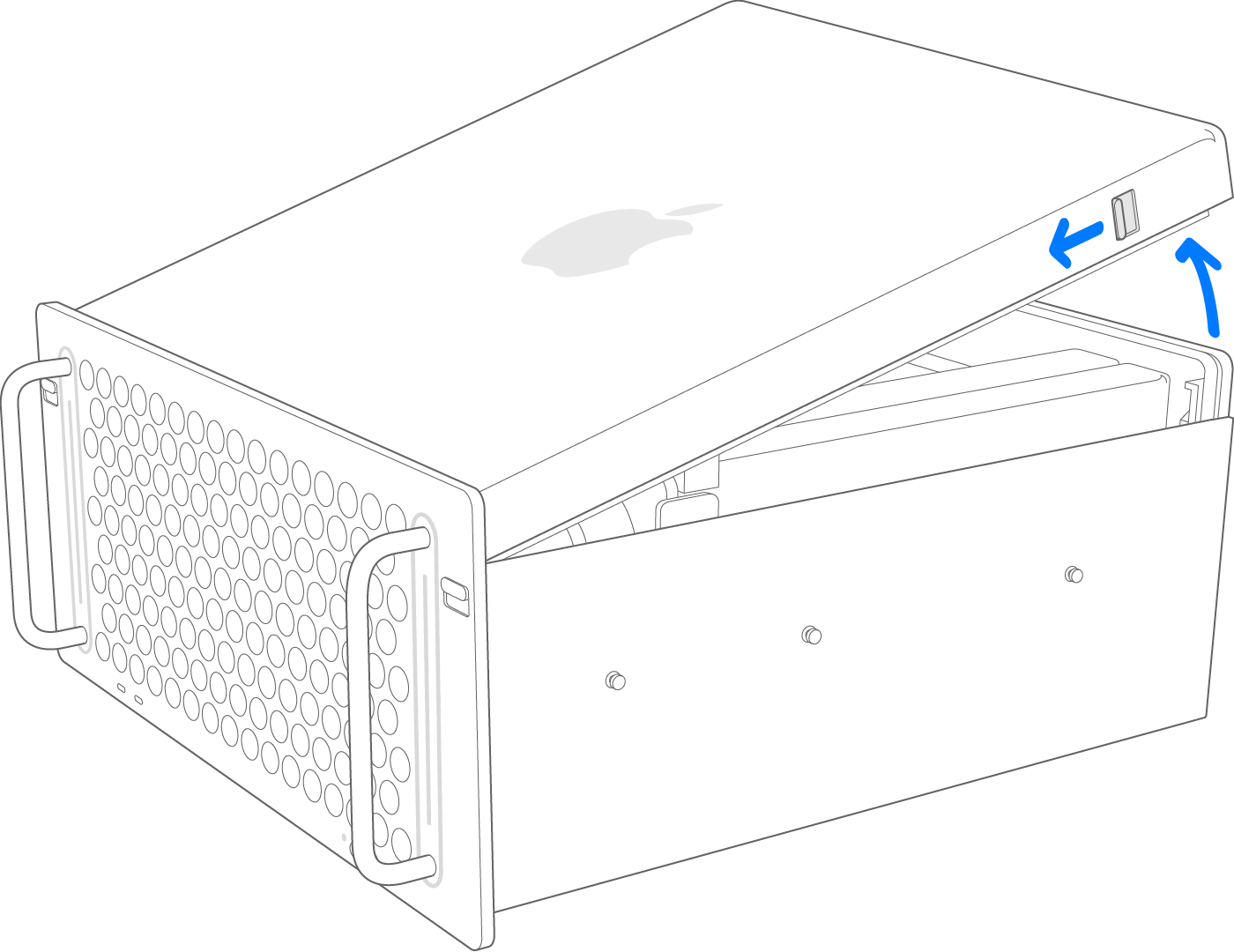
Install a PCIe card
Slide the lock to the unlocked position.

Using a Phillips-head screwdriver, unscrew and remove any brackets and slot covers covering the slots where you want to install your card.
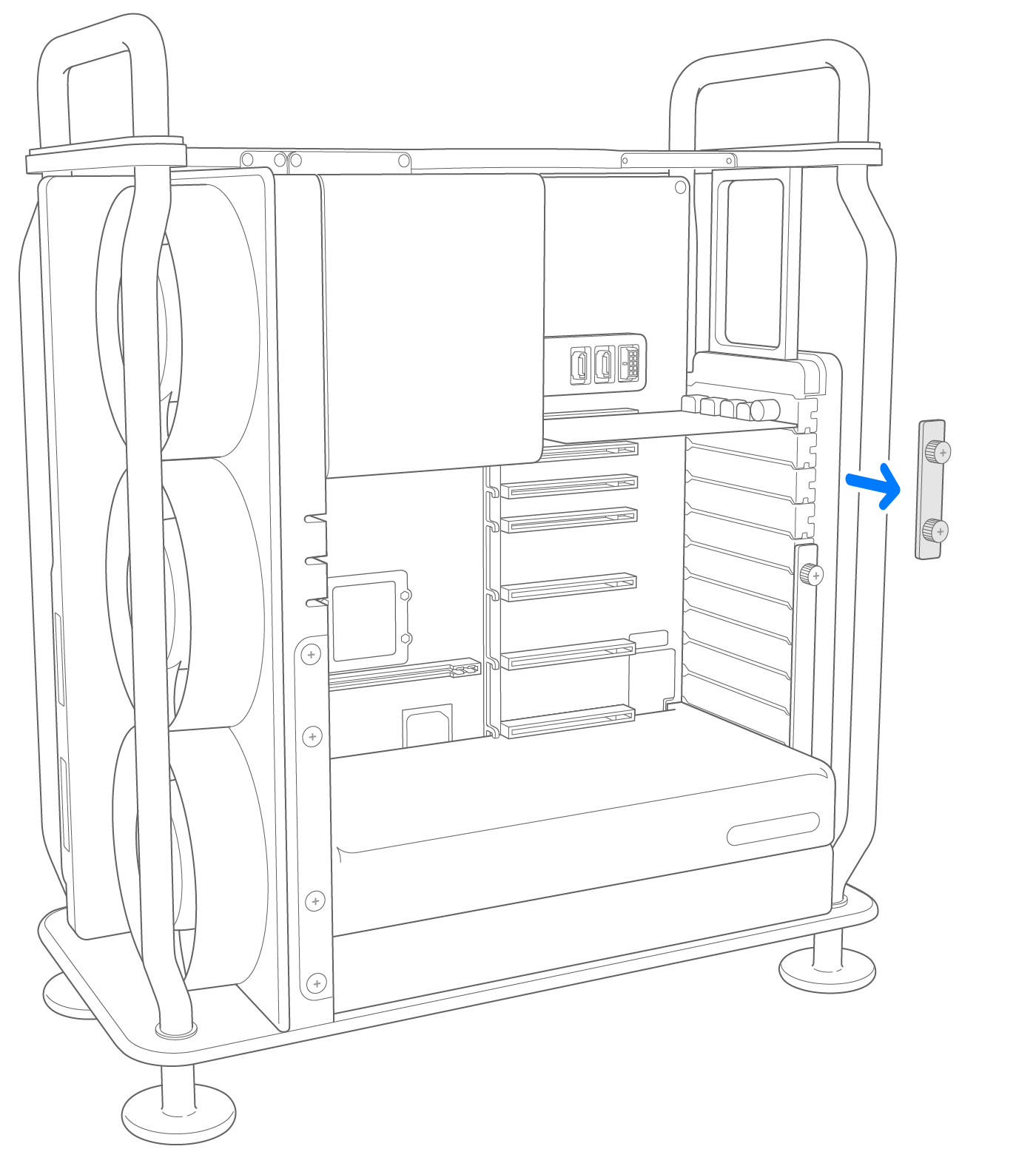
Remove your new card from its static-proof bag and hold it by its corners. Don't touch the gold connectors or the components on the card.
Use only PCIe modules that are safety certified (CSA, UL or equivalent) and specifically state that they are compliant with the industry standard PCIe specification. Use of non-certified compliant modules may not keep different input power sources separated, resulting in a possible burn hazard.
Make sure the card pins are in line with the slot as you insert the card into the PCIe slot.

Slide the lock to the locked position.

Reinstall any side brackets you removed, then tighten the screws on the bracket.
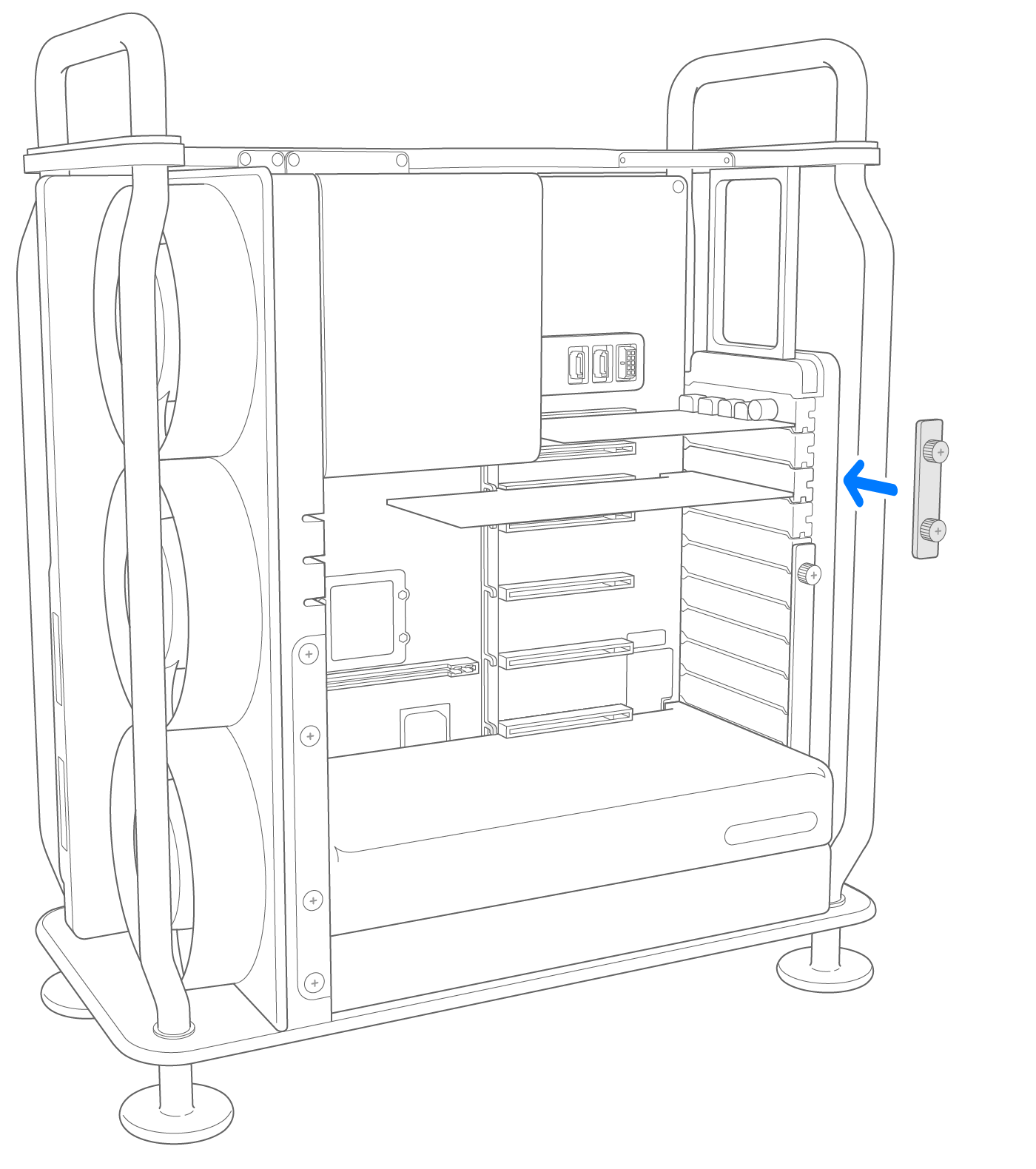
Reinstall the housing or top cover
Follow the steps to reinstall the housing on Mac Pro (2019) or the top cover on Mac Pro (Rack, 2019).
Mac Pro (2019)
Carefully lower the housing over Mac Pro.
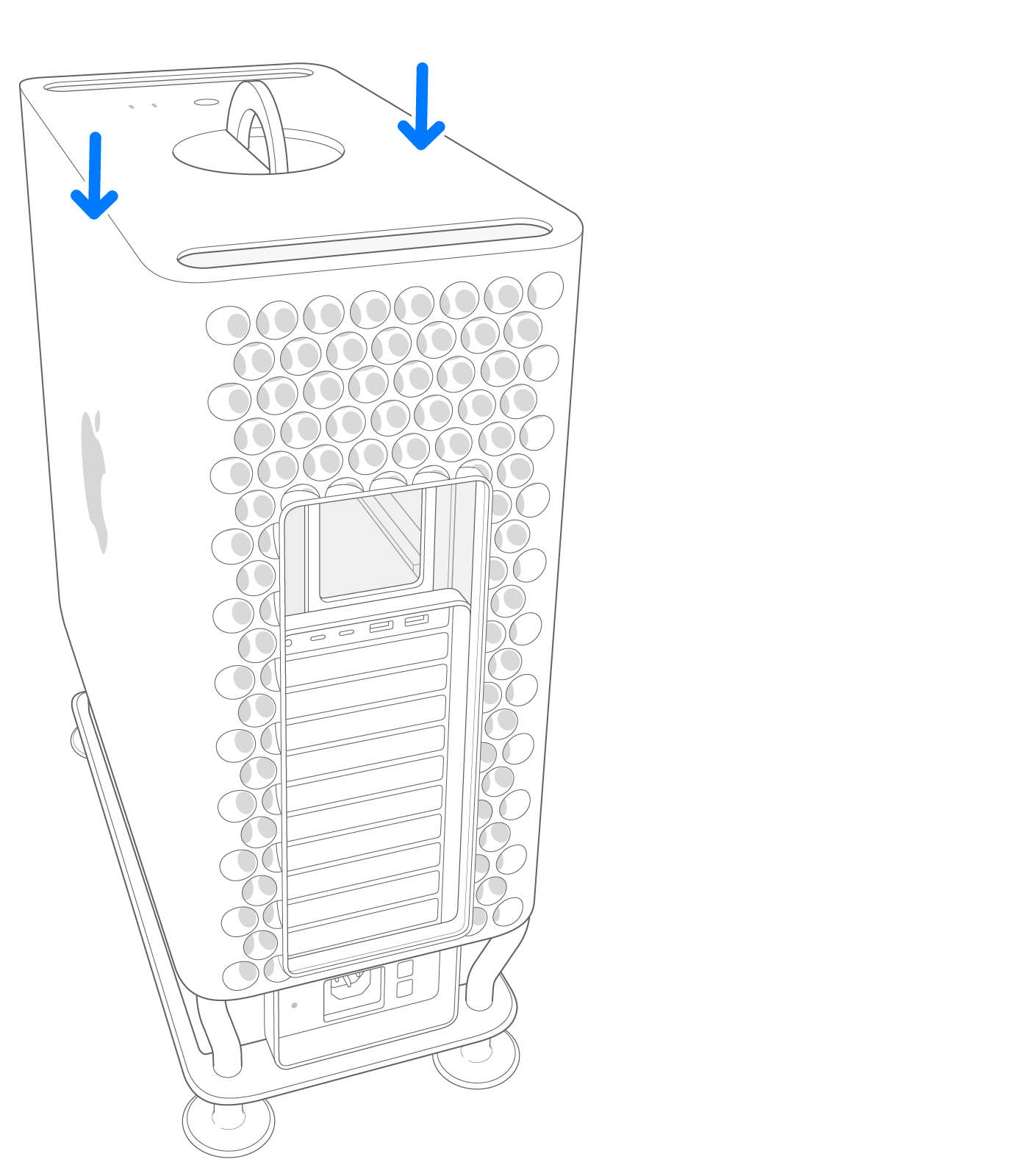
Top: Locked position (dots match)
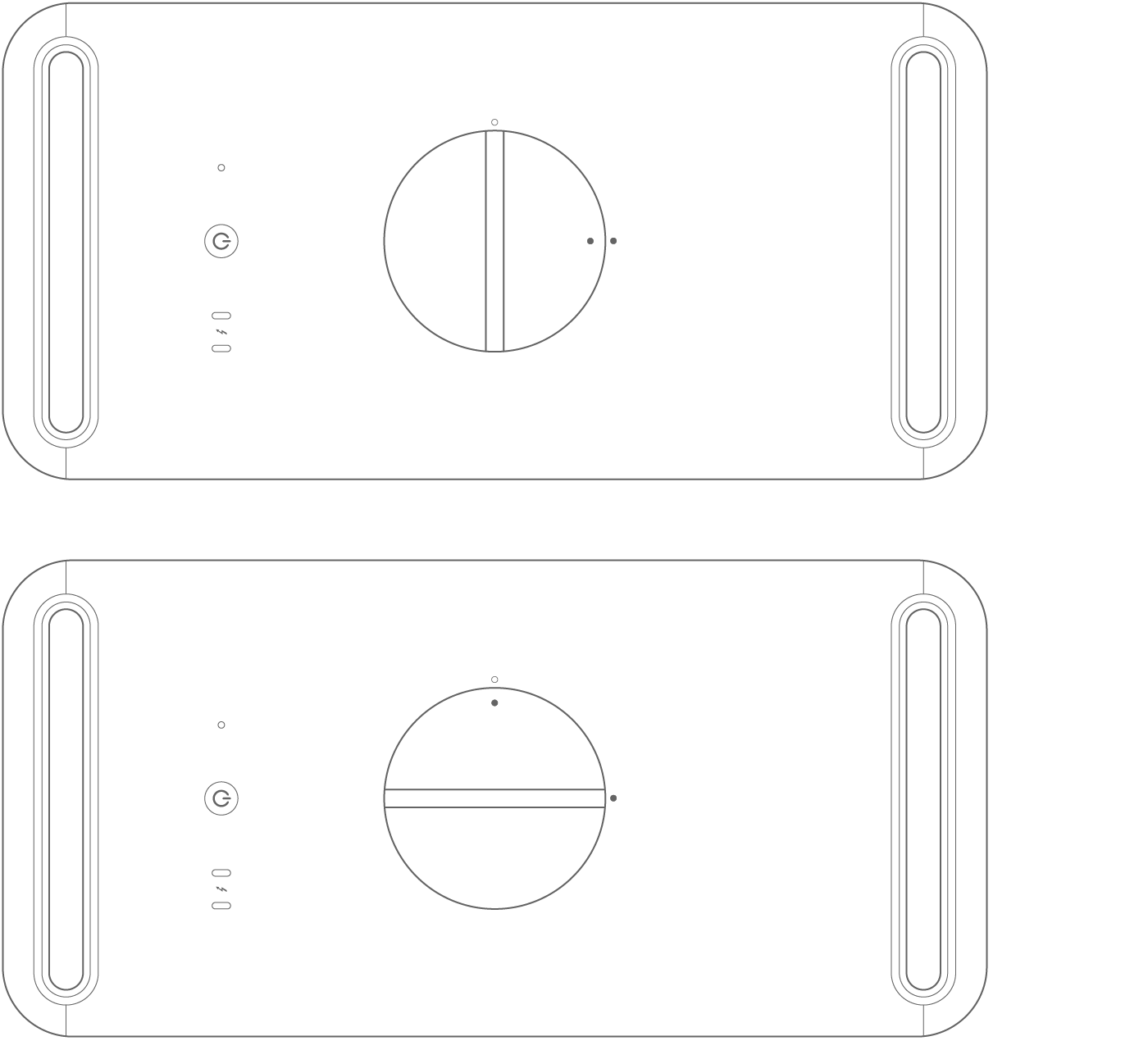
Top: Locked position (dots match)
Bottom: Unlocked position (dots do not match)
Connect the power cable, display, and any other peripherals.
Mac Pro (Rack, 2019)
Align the edge of the top cover with the slot in the front plate, then firmly press near the release latches and listen for them to click into place.

Connect the power cable, display, and any other peripherals.
Turn on third-party drivers
Some third-party PCIe cards require a driver before they can be used in macOS. After you install a driver for a third-party PCIe card, restart your Mac Pro, then turn the driver on:
Choose Apple menu > System Preferences, then click Security & Privacy.
Click the and authenticate as an administrator.
Click the Allow button.
Restart your Mac.
Use Expansion Slot Utility
When you install or remove PCIe cards on your Mac Pro, EFI detects the cards in each slot and allocates bandwidth between the two pools to maximise throughput. Expansion Slot Utility lets you view and change how your cards are allocated.

Use Automatic Bandwidth Configuration
By default, your Mac Pro uses Automatic Bandwidth Configuration to automatically manage how the cards are allocated to each of the two pools.
Assign pool allocations manually
If you want to manually assign the pool allocations for your cards, turn off Automatic Bandwidth Configuration and choose a pool for each card. For example, you might want to give a single card 100 per cent allocation of pool A.
Whenever you make changes to pool allocation, Expansion Slot Utility prompts you to save your changes and restart your Mac before they take effect.
Get help installing PCIe cards
Learn what to do if you get a PCIe card misconfigured error or your Mac Pro won't turn on after installing a PCIe card.
Resolve PCIe card misconfigured errors
If your PCIe cards can be installed in different slots to provide better performance, you'll see a PCIe card misconfigured notification after your Mac Pro starts up:

Click Learn More, which opens the PCI Cards tab of About This Mac. Then, click Expansion Slot Utility to view recommendations on how you should reconfigure your cards.
If your Mac Pro doesn't start
If your Mac Pro doesn't start up and the status indicator light
If you recently installed one or multiple PCIe cards, remove each card one at a time and try turning on your Mac Pro after each card removal.
Learn more
Information about products not manufactured by Apple, or independent websites not controlled or tested by Apple, is provided without recommendation or endorsement. Apple assumes no responsibility with regard to the selection, performance or use of third-party websites or products. Apple makes no representations regarding third-party website accuracy or reliability. Contact the vendor for additional information.